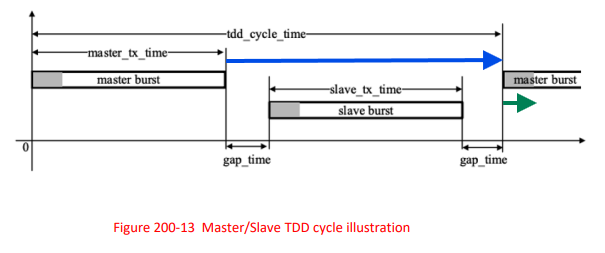All,
As I mentioned in today’s 802.3dm interim teleconference, I am sharing my apples-to-apples comparison of ACT and TDD propagation delay through the network. This evaluation does
not account for the full end-to-end propagation delay, but only the fundamental differences in the propagation delay. I would greatly appreciate any comments or suggestions if anyone thinks that this is not a valid apples-to-apples comparison.
The analysis is based on the following texts:
- ACT -
https://ieee802.org/3/dm/public/0925/8023-200_ACT_D0p7a.pdf
- TDD -
https://ieee802.org/3/dm/public/0725/Baseline_Text_for_TDD_PHY_V1.1_07_14_25.pdf
The following table shows the calculated propagation delay for ACT and TDD:
|
Data Rate [Gbps] |
Line Rate (R) [Gbps] |
N |
K |
m |
FEC latency [ns] |
Quiet Period [ns] |
Refresh Period [ns] |
Total Latency [ns] |
|
|
ACT |
0.1 US |
0.117 |
50 |
46 |
6 |
2821 |
0 |
0 |
2821 |
|
2.5 |
2.813 |
360 |
326 |
10 |
1404 |
0 |
0 |
1404 |
|
|
5 |
5.625 |
360 |
326 |
10 |
702 |
0 |
0 |
702 |
|
|
10 |
11.25 |
360 |
326 |
10 |
351 |
0 |
0 |
351 |
|
|
TDD |
0.1 US |
3 |
130 |
122 |
8 |
371 |
9040 |
160 |
9571 |
|
2.5 |
3 |
130 |
122 |
8 |
371 |
773 |
160 |
1304 |
|
|
5 |
6 |
130 |
122 |
8 |
185 |
773 |
160 |
1118 |
|
|
10 |
12 |
130 |
122 |
8 |
93 |
773 |
160 |
1026 |
Explanation of the calculation
The calculation in the table includes propagation delay due to FEC, TDD quiet period, and TDD refresh header. To simplify the analysis, I have not included other contributions
to the propagation delay, that are more related to implementation that the modulation scheme. I would greatly appreciate any comments or suggestions if anyone thinks that this is not a valid apples-to-apples comparison.
The FEC propagation delay is calculated according to
FEC_Delay =
(2*N-K+1)*m/R
where N is the total number of symbols in the RS-FEC, K is the number of data symbols in the RS-FEC, m is the number of bits per RS-FEC symbols, and R is the line rate. The calculation
assumes that no interleaving is used.
The ACT transmission is continuous, so the quiet period and the refresh header are not present, and the associated delay is zero.
The following figure (Figure 200-13) is taken from page 33 of the TDD text proposal in Madrid:
Baseline_Text_for_TDD_PHY_V1.1_07_14_25.pdf. The blue arrow represents the quiet period for the Master and the green arrow represents the duration of the refresh header for the Master. No data is transmitted by the Master during the quiet period and the
refresh header, so this time adds directly to the TDD propagation delay. The Slave has corresponding definitions for the quiet period and refresh header duration.

According to page 41 of
Baseline_Text_for_TDD_PHY_V1.1_07_14_25.pdf the quiet periods are given as

The quiet period of 9040ns and 773ns are used for the quiet period in the calculation of the propagation delay in the table above.
According to tables 200-5 and 200-6 on page 31 of
Baseline_Text_for_TDD_PHY_V1.1_07_14_25.pdf, the refresh headers in data mode are 480 symbols for 2.5G and 960 symbols for 5G and 10G. Dividing these numbers by the symbol rates of 3Gbaud and 6Gbaud, respectively, we get 160ns duration for all rates. The
160ns refresh header duration is used to calculate the propagation delay in the table above.
Ragnar
To unsubscribe from the STDS-802-3-ISAAC list, click the following link: https://listserv.ieee.org/cgi-bin/wa?SUBED1=STDS-802-3-ISAAC&A=1